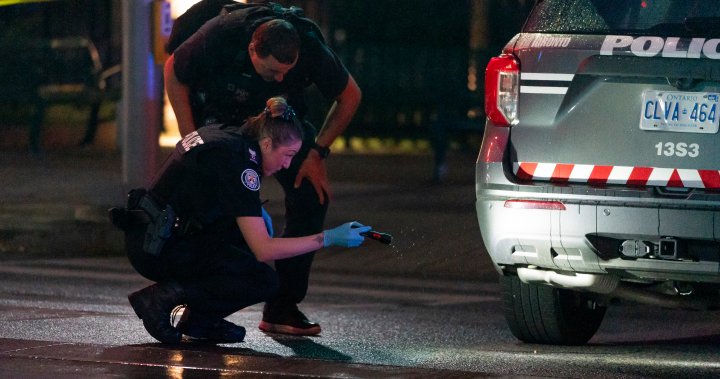Homicides in Canada dropped in 2023, new Statistics Canada data shows.
Police services across Canada reported 778 homicides in 2023, which was 104 fewer than the previous year. Canada’s national homicide rate dropped by 14 per cent from 2.27 to 1.94 homicides per 100,000 population, according to a StatCan report released Wednesday.
This is the first time since 2019 that Canada’s homicide rate was below two homicides per 100,000 people.
The change was led, in large part, by significant drops in homicide rates in Canada’s three major cities — Toronto, Montreal and Vancouver.
Eight of Canada’s provinces also saw declines, with the largest drop in homicides coming from New Brunswick (a 42-per cent drop), followed by Nova Scotia (a 29-per cent drop) and British Columbia (a 23-per cent drop).

Among the provinces that saw an increase in homicides, Newfoundland and Labrador saw eight homicides in 2023, compared to three in 2022.

Get breaking National news
For news impacting Canada and around the world, sign up for breaking news alerts delivered directly to you when they happen.
Prince Edward Island saw no reported homicides in 2022 and one in 2023.
Women were far more likely than men to be victims of homicide. There were 67 victims of intimate partner homicides, down from 103 in 2022, with women accounting for 73 per cent of victims.
Nearly four in 10 homicides were committed with a firearm in 2023.
A quarter of all homicides, or 173 total, were gang-related homicides in 2023.
This number is 31 fewer than 2022. Police said 64 people under the age of 18 were accused of committing a homicide, compared with 95 in 2022.

Indigenous peoples in Canada remain disproportionately at risk of being a victim of a homicide.
Despite representing five per cent of the overall population, just over one in four (26 per cent) homicide victims were Indigenous.
The homicide rate among Indigenous people was 9.31 per 100,000 Indigenous people, more than six times higher than the rate for non-Indigenous Canadians.
In 2023, 30 per cent of all homicide victims (235) were identified as belonging to a racialized group.
The overall rate of homicide for racialized victims (1.98 victims per 100,000 population) was higher than the homicide rate for non-racialized victims (1.90 per 100,000 population).
Among all homicide victims identified as racialized, the most represented groups were Black (39 per cent) and South Asian (20 per cent) individuals.
© 2024 Global News, a division of Corus Entertainment Inc.





